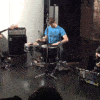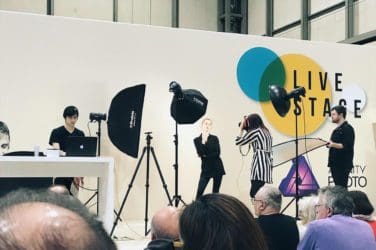What could the future of accessibility in the arts look like? – words Al Woods
The conversation surrounding accessibility in the arts is, unfortunately, one that still needs to be had. While museums, theatres, galleries and more have all been working to make the arts as accessible as possible, the limited funding available to do just that is making this fight more and more difficult with every passing day.
But like all worthy fights, it’s still being fought and it’s important to look to the future and what it could hold. From motability adaptations to complete city-wide accessibility, the future of accessibility could be bright. But what does this look like when it comes to the arts?
Making art
When it comes to making art, having a disability can be frustrating but it should never be limiting and technology is doing wonders to help change that. The digital age we live in is making art and creativity more and more accessible to people from all walks of life no matter what their afflictions may be. From smartphones providing artwork apps with the tap of a screen, and more abstract, expressive styles being more popular than ever, anyone can enjoy making art with just as high of a chance of getting to show that artwork as any other artist.
But the technology doesn’t stop there. 3D printing is opening up new world in sculpture, and devices such as the Vertwalker are making art easier for those with limited mobility. The Vertwalker is a lightweight robot built using 3D printing that can walk on walls. Yes, really, it can walk on vertical surfaces. Thanks to a vacuum on the bottom and two computer fans, two weeks and an Arduino-based custom electronic set up inside, this device can travel along walls. Attach the pen that uses acrylic paint, and you can create all the abstract artwork you like, all by controlling the robot through a software program. The technology has a long way to go, but it’s just an insight into a potentially huge art form.
Getting to art
Making the arts accessible to disabled citizens should be, and is an important part of the industry. From ensuring that museums and theatres are fully accessible from entrance to exit, and that transport around major arts-heavy cities is without disruption, there is so much that needs to be done to make the arts accessible. While museums and theatres are doing their best to make their buildings accessible to wheelchair users, for example, there are often obstacles in the way, from slight lips that are just that little too high, to areas of a building that a wheelchair can’t access due to a lack of elevator. This is being worked on, there’s no denying that, but it’s arguably just not happening fast enough.
Experiencing art
This is where the future really does look bright. In fact, it’s already well on its way to being bright. If there’s anyone we can trust with making the arts accessible, its artists themselves – not least because it gives them whole new mediums to work with and challenges to face. 3D printing, one of the genres of art, has done more than offer a way to make sculptures and wall-climbing robots. 3D printing can also help to make paintings blind-user-friendly. By printing out famous – or even brand new! – paintings with a 3D printer, for example, people who are blind can feel the paintings in a way they haven’t been able to before. However, artists are using more 3D mediums than just a printer. Museums and galleries alike are introducing more and more ‘tactile’ tours, in which visually impaired guests can come in and feel their way around – supervised of course, to keep the artefacts and artwork in good condition – but it’s just the first step to making all kinds of art accessible.
We only have to look at how widespread subtitles are in movies, TV, YouTube, and even some stage shows nowadays to see that the industry is doing something with what it has. There is still plenty of room for much-needed improvement, but it’s at least a little heart-warming to know that progress is being made, albeit a little slowly. As for what the future brings? Only time will tell. But with technological advances and better funding, who knows where accessibility could go.
What could the future of accessibility in the arts look like? – words Al Woods























